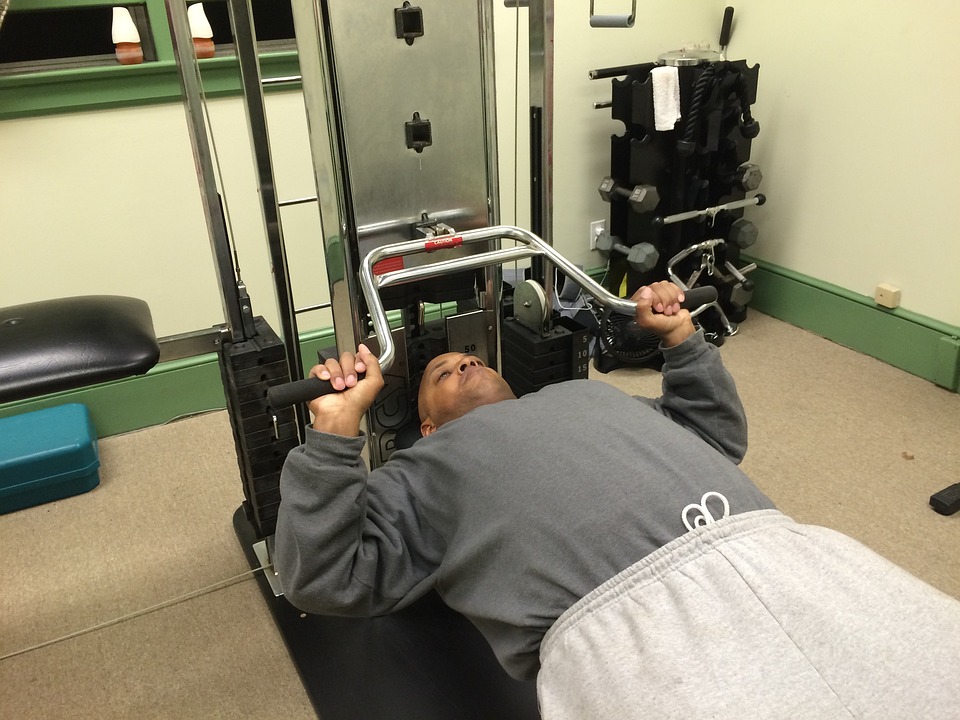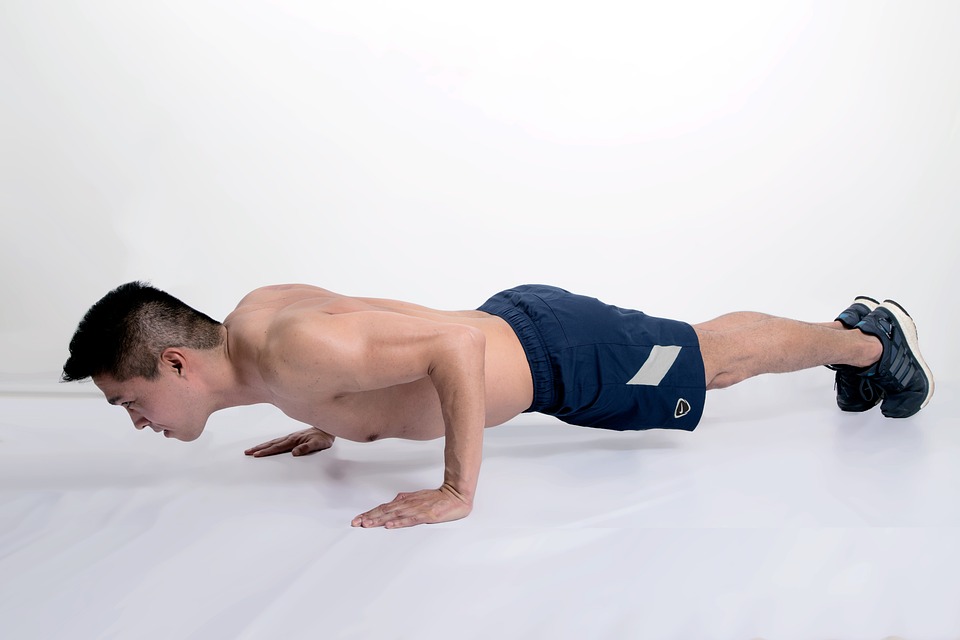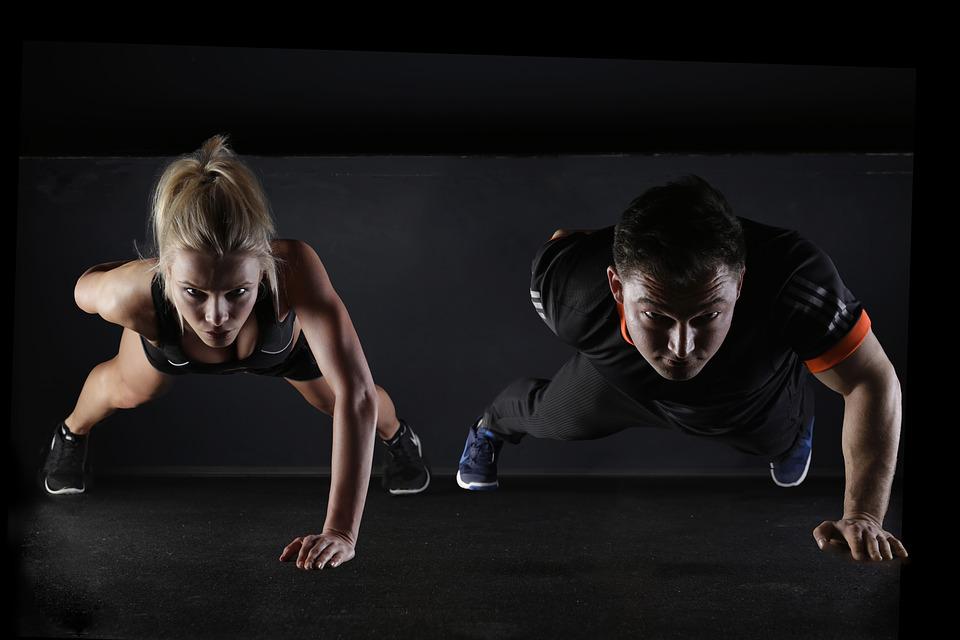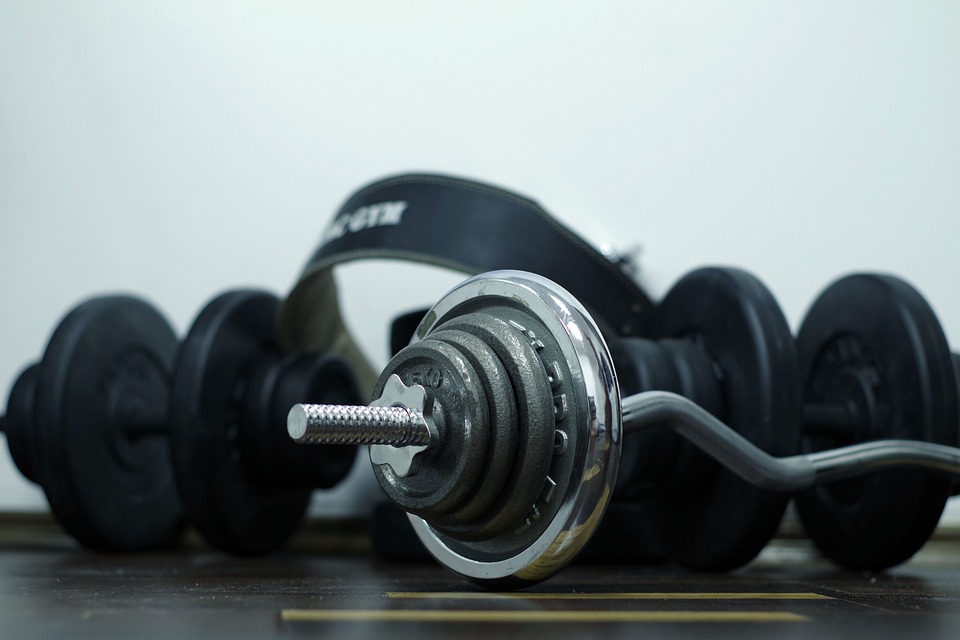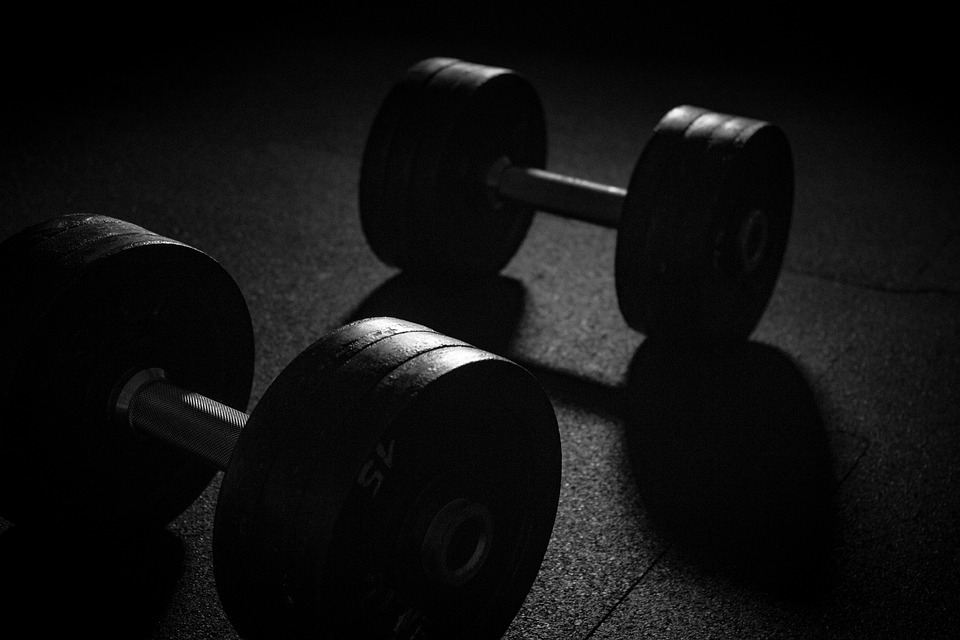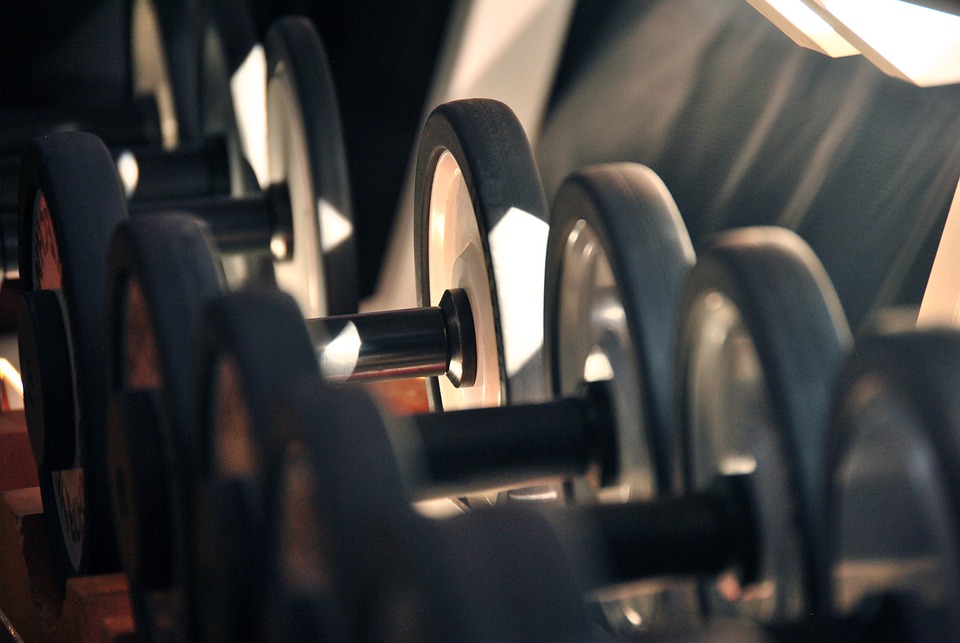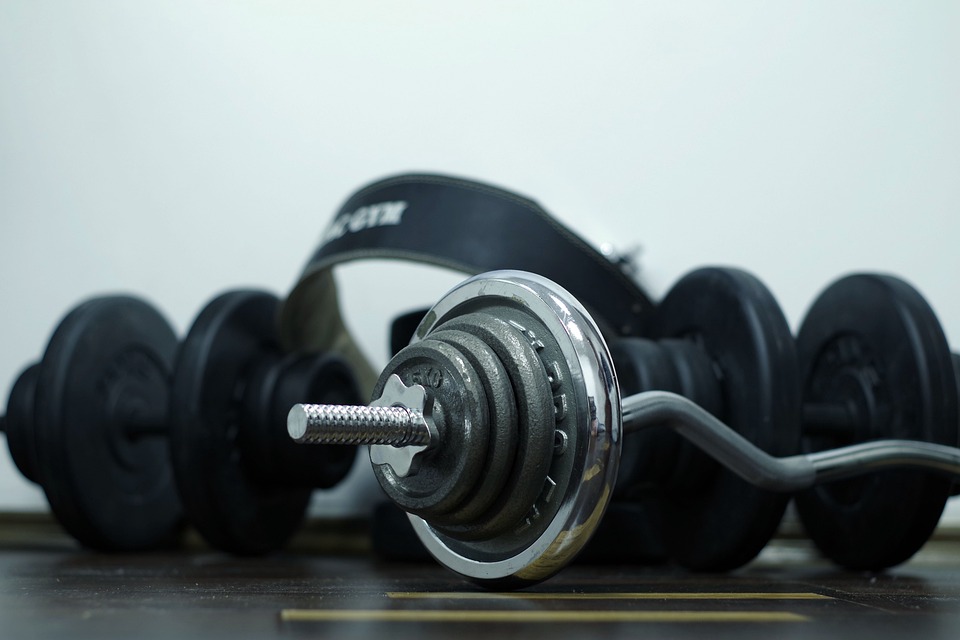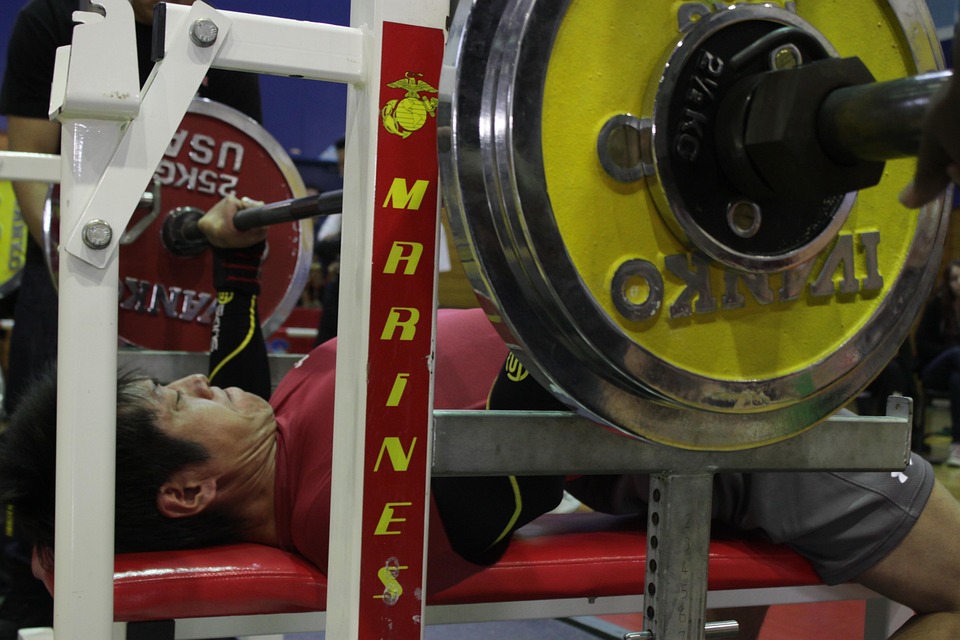
When are you ready to take on the bench press?
Before you attempt to lift the bar, you need to ensure that your chest, shoulders, and triceps are strong enough to handle the weight of the empty bar. The barbell used for bench pressing in most gyms weighs 20kg. How much weight you can lift may vary depending on your experience with weightlifting. If you want to improve your upper body strength, then you need to start doing press-ups.
Assuming the press-up position, place your hands underneath your shoulders with your core tight and your toes together. Your body should form a straight line from head to heels. Lower your chest to the floor by bending your elbows and pressing back up to the starting position, being careful not to lock out your arms.
If you have never done a press-up before, you need to focus on quality and gradually increase your strength until you can do ten without stopping.
If you can bench press with proper form, you are ready to do an empty bar bench press. This can only be done if you have someone to help you lift the bar if you start to struggle. This article covers everything you need to know about the bench press, a weight training exercise that is key for adding muscle size and strength across your upper body.
How to Do the Bench Press
Step 1 — Initial Setup
Place your head under the bar on the bench and lie flat. Sit on the bench with your feet up, grab the barbell with an overhand grip that is shoulder-width apart, and squeeze your shoulder blades together. Stand with your feet on the ground and your knees bent. If you shift your heels towards the bench, you will be able to create more tension and force in your lower body.
As you press the bench, feel a strong connection through your entire body. Maintain your shoulder blades in a retracted position. Squeeze the bar with both hands to ensure tightness.
A narrower grip (closer to your shoulder) will target your triceps more, while a wider grip (further from your shoulder) will target your pecs more The width of your grip can determine which muscles are targeted during a bench press. A narrower grip will work the triceps more, while a wider grip will work the pecs more. A wider grip on the barbell will target the inner portion of the pectoral muscles and the front shoulder muscles more, while a closer grip will focus more on the triceps and the upper chest. A shoulder-width grip is the best way to start training in order to build muscle coordination and reduce joint strain. As you gain more experience, slowly change your grip.
Step 2 — Lift Off
Press your feet into the floor, getting your heels as flat on the ground as possible. This creates tension throughout your lower body. Start by inhaling deeply, then exhale as you lift the bar off the rack by straightening your arms. You should line the bar up above your shoulders with both arms locked out.
A tip to avoid injury while weightlifting is to not push the bar out of the hooks too hard, as this can spread the shoulder blades and put too much strain on the shoulder joints. The bar should be set at a height that your arms are only slightly bent when you unrack it. If your arms are longer, use the top rack position. To adjust for shorter arms, use a lower rack position.
Step 3 — Descend With Control
Start with the barbell over your shoulders. Bend your elbows and lower the bar towards your mid-chest. Tuck your elbows slightly towards your feet. Make sure your forearms remain vertical, and don’t allow them to move closer to your head or feet as you continue holding your breath at the bottom. Remember to touch the bar to the same point on your chest on every repetition.
The barbell should move down a bit below your shoulder level, and slightly away from your body. Don’t lower the bar in a straight line to your upper chest; Instead, lower it in a curved line. Doing so increases joint strain and decreases power output. Think of performing a very slight arc.
Step 4 — Press to Lockout
Once the barbell touches your chest, pause for a short time and then press it back to the starting position. Release your breath as you press up. The barbell should be moving up and backward toward your head. When you have completed the repetition, your shoulders, elbows, and wrists should be vertically aligned, or “stacked”.
When pressing up during this exercise, make sure that your butt remains in contact with the bench. Drive into the floor with your feet. This engagement of your lower body muscles will help you to drive the weight up, which is necessary to move heavier loads.
Bench Press Mistakes to Avoid
There are a few recurring errors in technique that are commonly seen when people are bench pressing in most gyms.
No Upper Back Tightness
Tightness in the upper back is necessary for a secure and successful bench press. It is important to maintain retracted scapulae (shoulder blades) throughout the entire set to avoid injury. Be sure to keep your upper back tight to ensure shoulder health and stability when lifting.
The traps, rear delts, and rhomboids are activated by retracting the scapulae. The chest and triceps work together with these muscles to lower the bar slowly and then move quickly and forcefully into the press.
Make sure you puff your chest up to activate your scapulae before gripping the bar. This cue helps you position your chest, shoulders, and upper back correctly.
No Leg Drive
Don’t be one of those people who think that bench pressing with your ankles crossed and feet in the air provides some sort of benefit. It doesn’t. If you pick up your feet while lifting weights, it will decrease your stability and make it harder to lift heavier weights.
The instability of the weight distribution increases the risk of injury as it is supported by the shoulder joints and upper back muscles rather than the whole body.
It is best to keep your feet closer to your hips to maximize stability. Maintaining steady foot pressure on the floor is important. The extra pressure will make it easier to move the bar from the floor to your legs when you push up.
If you press your feet down onto the floor while you are sitting, it will make you more stable, similar to how a table is more stable when it has four legs on the ground instead of just three.
Weak Wrists
Some people think that having a firm grip and strong wrists is not important when doing the bench press. Many lifters tend to neglect “stacking” their wrists.
Instead of keeping their hands straight, they allow them to bend backward so that their palms face the ceiling. The knuckles-back position puts your wrist in an unstable position and makes your grip weaker.
It is better to position your joints vertically under the bar to create a stronger overall lifting position, even though it may feel awkward at first. When you grip the barbell for a deadlift, try pressing your thumb back into the bar, rather than just holding it with your four fingers. The extra focus required will cause you to grip the club very tightly and keep your wrist in a straight, neutral position instead of bending it backwards.
Bench Press Tips For Beginners
Anyone looking to improve their bench press form, Jenna McKean, a British powerlifter and Maximuscle ambassador, provides some helpful tips.
1. Points of contact
- Your feet should stay on the ground beneath or behind your knees. Press your feet to the floor to create tension in your hamstrings and glutes.
- Your head, shoulders, and hips should all remain on the bench throughout the lift, and your shoulders should retract and press firmly into the bench to create a solid foundation.
2. The set-up
- Your eyes should be directly under the barbell and the bar should be no higher than your wrists when your arms are locked out overhead.
- For most people, your hands should be on the bar just a bit wider apart than your shoulders.
3. Unracking and re-racking
- Use a spotter! If you don’t have one, stop well before failure so that you can safely re-rack the bar.
- To unrack the bar, start with a strong lock-out where the bar is directly above your shoulders.
- Lower the bar under control for one or two seconds to approximately where a chest strap heart rate monitor would be, then press until your elbows are straight and you have the bar under control.
- Re-rack carefully and make sure the bar is secure before you release the tension in your arms.
Bench Press Form Tips
If you want to get stronger and bigger, don’t worry about how much weight is on the bar. Instead, focus on being stable on the bench so you can create tension from your head to your toes and get more out of each rep. Here’s more advice to boost your bench press form.
Get a grip
McKenzie says that you should grip the bar about shoulder-width apart to maintain the best position to press the weight up. ” You could hurt your shoulders if your grip is too wide, and strain your elbows if it’s too narrow. Grasp the barbell with as much force as you can muster, and as you press it upward, mentally picture yourself trying to bring your hands together. However, don’t allow your hands to move closer together.
Trainer Robert Kane suggests squeezing the bar as hard as possible for a second or two on a heavy set before taking it out of the rack. ” The principle of irradiation states that activating the muscles surrounding the target muscle will allow the target muscle to lift heavier. The rule of thumb is to wrap the bar around them. If you use a thumbless grip when lifting weights, it’s called the “suicide” grip for a reason.
Keep your feet on the floor
Use your legs to push your body up off the bench. As you drive your head, upper back, and glutes into the bench, you need to push your feet against the floor to create torque and lift your body off the bench. This creates tension throughout your body that allows your muscles to fire at their maximum potential. Flex your quads by pressing your feet hard into the floor, according to strength coach Paul Carter. Your body works together as a team, so having every muscle as tight as possible will help you bench more weight right away.
Arch your lower back
“Before you even put your hands on the bar, make sure you have a strong arch in your lower back,” says McKenzie. It is important to keep your glutes in contact with the bench and to tense them so that you can maintain an arch in your lower back. This will keep your upper and lower body stable.
According to Carter, most guys do not get tight enough before they set up to the bench. You need to pull your shoulder down hard into the bench to create tension across your torso. This will keep your body compact and tight, giving you the ability to push harder when lifting heavier.
Keep your elbows close
Start each repetition by slowly bending your elbows to lower the bar until it touches your chest near the nipples, according to McKenzie. To achieve perfect form, you should keep your elbows close to your sides as you lower the weight, then press back up with a lot of force.
Be head strong
According to McKenzie, you should keep your head in contact with the bench at all times while performing the exercise. ” Looking up will affect the rest of your body and make it difficult to stay balanced. Your shoulders and upper back should remain in contact with the bench for stability purposes. As you lower the bar to your chest, squeeze your shoulder blades together.
Muscles Worked by the Bench Press
The bench press is a great way to work for multiple muscle groups on the upper body. This movement helps beginners learn foundational information, as well as experienced lifters who want to maximize strength and muscle.
Pectoralis Major
The pectoralis major muscle is the main muscle in the chest. Its primary function is to move the shoulder in a sideways direction, bringing the elbows closer to each other. The pec major muscle has two heads, the sternal head (located in the mid and lower chest) and the clavicular head (located in the upper chest). Both pec heads are active in the bench press.
Anterior Delts
The bench press uses the entire shoulder muscle, but the front deltoid is used most prominently. The updated anterior deltoid’s main function is to lift your arm towards your head, like when you are doing a bench press.
Triceps Brachii
The triceps brachii helps you to straighten your arm when it is bent. The lockout portion of the bench press is essential to the movement, specifically involving the triceps.
Latissimus Dorsi
The latissimus dorsi is one of the largest muscles in the back. They bring the shoulder joint into a neutral position. Your lats help to bring your arms back into line with your torso at the bottom of a bench press when your shoulder is in a stretched position and your upper arm is “behind” your back.
Upper Back
The bench press requires the trapezius, rear deltoids, and rhomboid muscles to work together to stabilize the shoulder and allow for a full range of motion at the shoulder joint in both the bottom and top positions.

